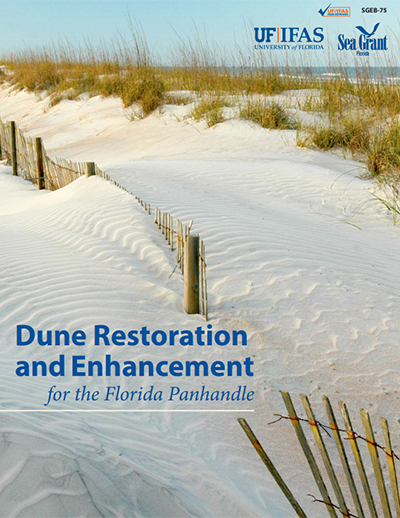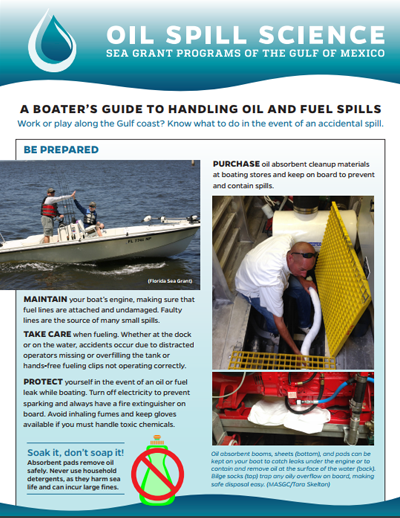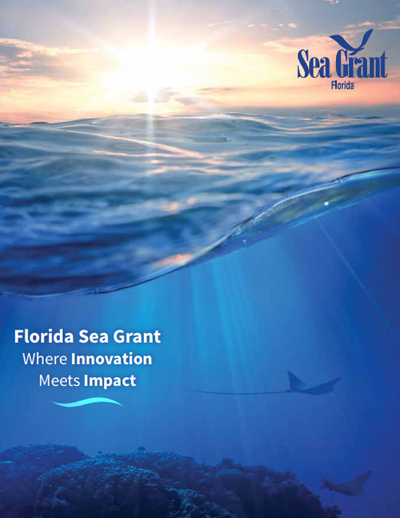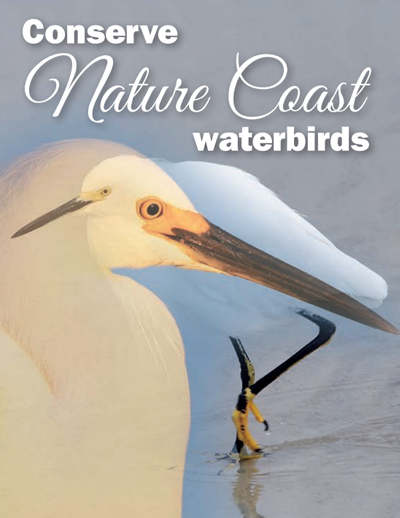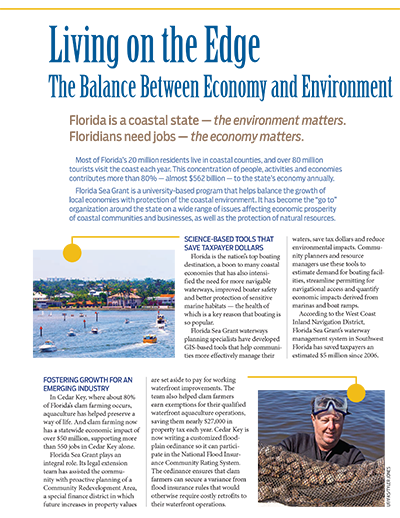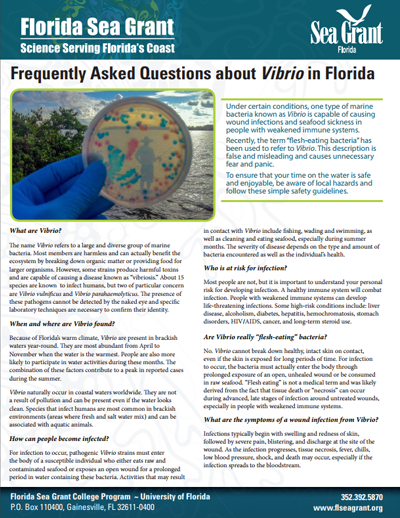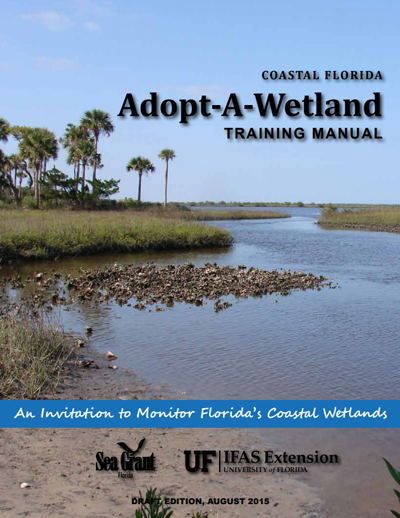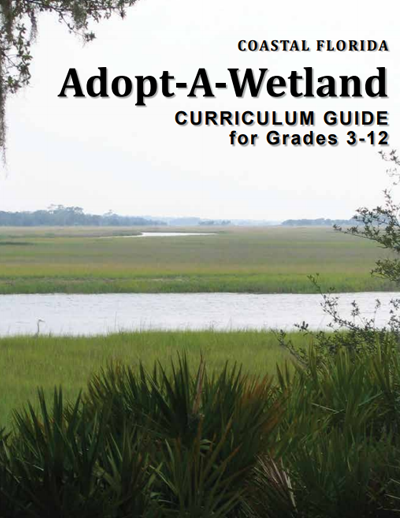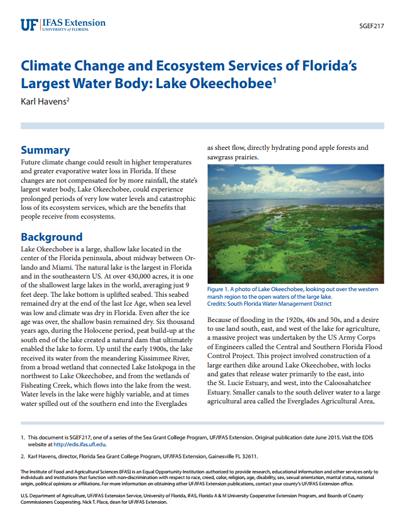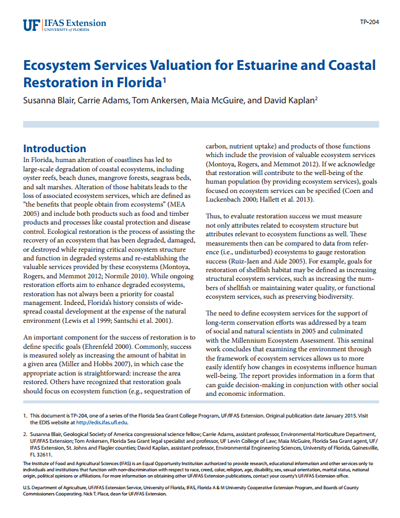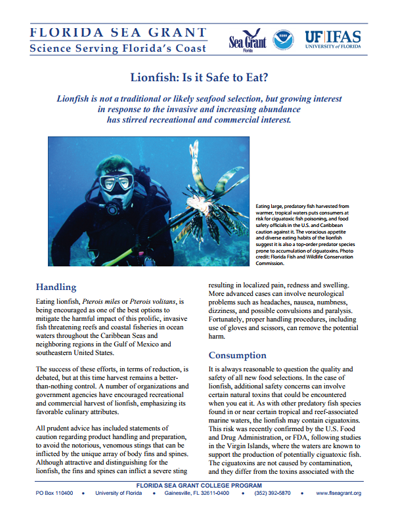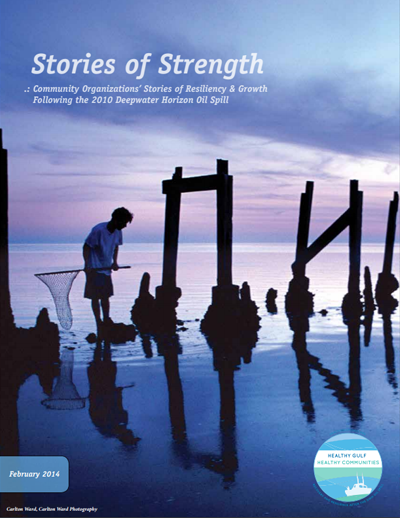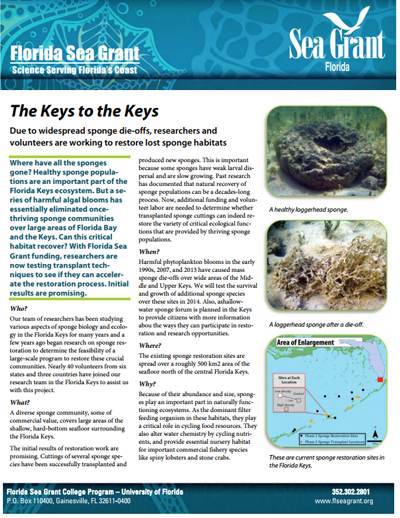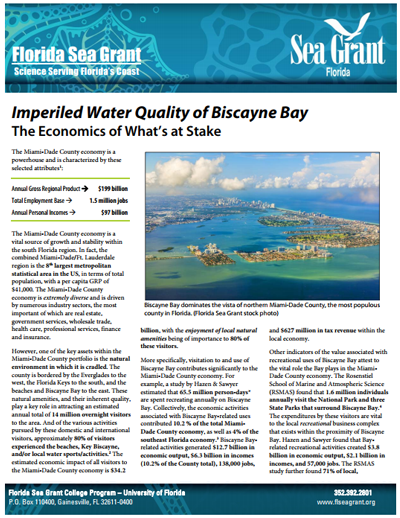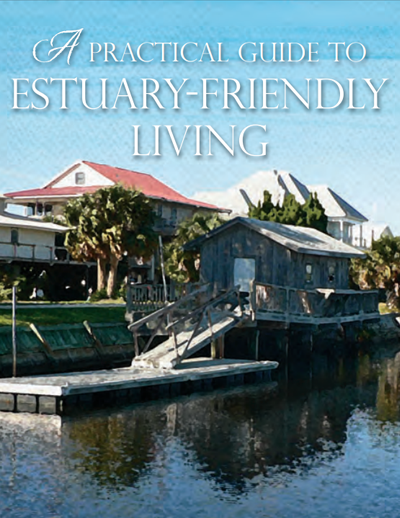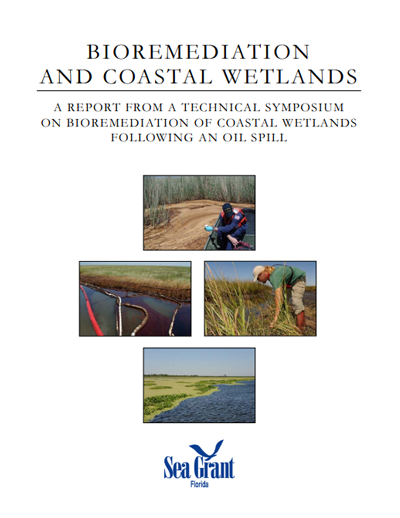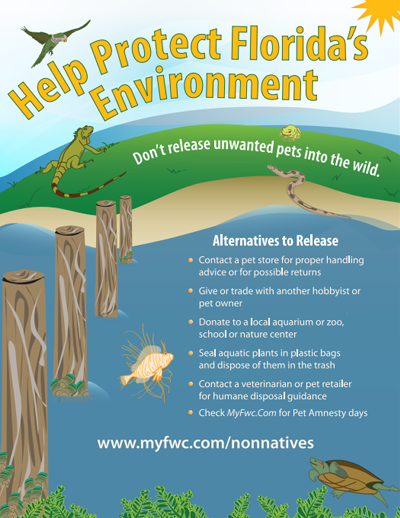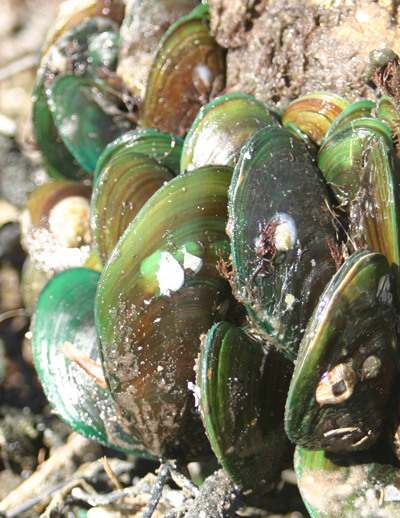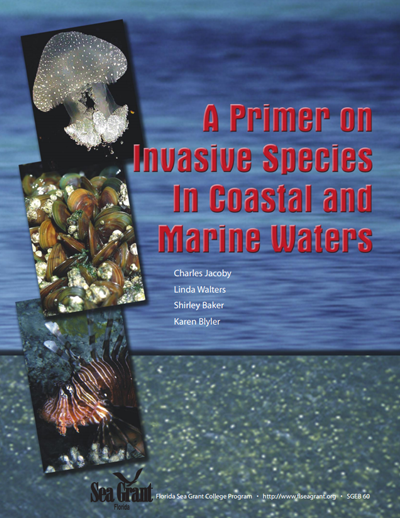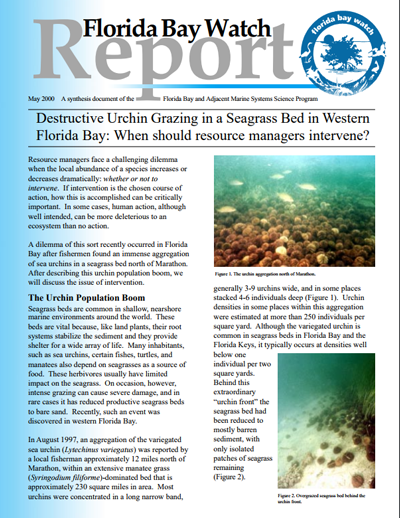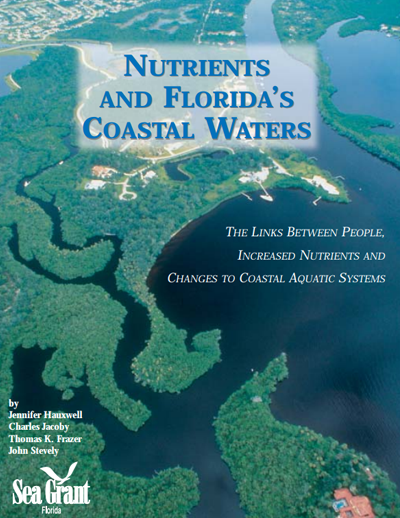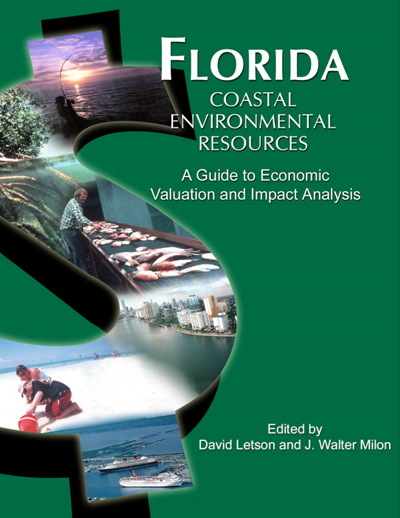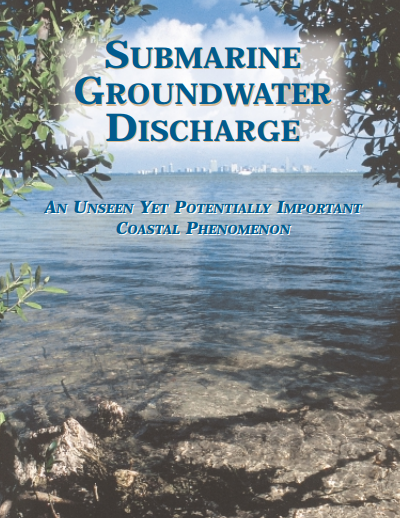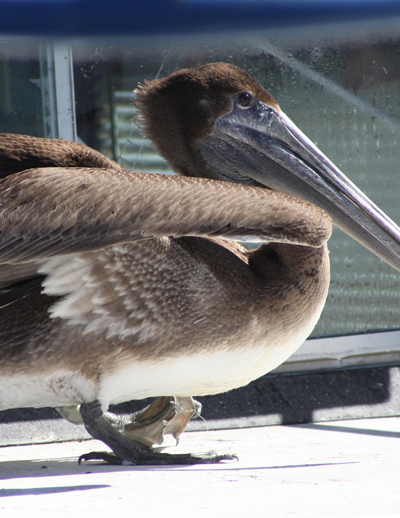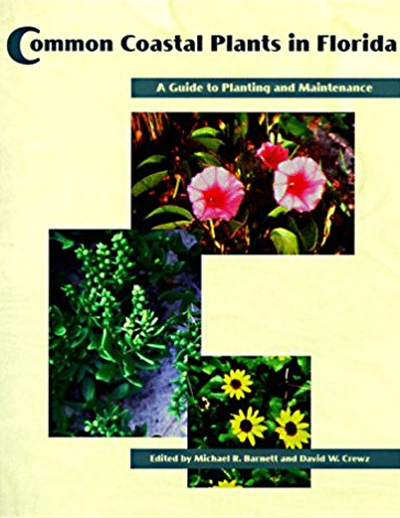Horseshoe crabs are an ancient and unique species that benefit humans as well as the natural world.
Why Are Horseshoe Crabs Important?
September 2018
Horseshoe crabs are an ancient and unique species that benefit humans as well as the natural world. This brochure explains horseshoe crab spawning habits, biology and research and tagging efforts in Florida.
Dune Restoration and Enhancement for the Florida Panhandle
SGEB-70
This manual provides an overview of the Florida Panhandle coastal dune systems and specific information on coastal dune
restoration and restoration enhancement activities.
SGEB-70
September 2018
The purpose of this manual is to provide an overview of the Florida Panhandle coastal dune systems and specific information on coastal dune restoration and restoration enhancement activities. These restoration techniques have been developed and tested through research and monitoring activities for the northern Gulf of Mexico region.
Streamlining Resiliency: Regulatory Considerations in Permitting Small-Scale Living Shorelines in Florida
This publication outlines the various permit options available for constructing living shorelines while focusing on the new, small-scale living shorelines permit exemption.
TP-233
April 2018
This publication outlines the various permit options available for constructing living shorelines while focusing on the new, small-scale living shorelines permit exemption.
Responsible Boating Protects Coral Reefs
Responsible boating will help protect the only living barrier reef system in the continental United
States and help prevent costly damage to boats.
SGEF-246
December 2017
This publication discusses how new and seasoned boaters can minimize harm to Florida’s coral reefs by taking a few simple precautions. Responsible boating will not only help protect the only living barrier reef system in the continental United States, it will also help prevent costly damage to boats.
Responsible Boating Protects Seagrass Meadows
Whether you're a visiting or resident boater, you can take action to reduce risks to critical seagrasses in Florida.
SGEF-245
December 2017
Florida leads the country in the number of registered recreational watercraft. With so many people out enjoying Florida’s waters, there is significant risk of damage to sensitive coastal habitats such as seagrass meadows. Whether you are a visiting or a resident boater, you can take action to reduce this risk and ensure Florida’s coastal marine habitats remain intact for future generations.
Florida Trend Report: Swimming in Plastic
This report discusses the problem of plastic and microplastic in Florida waters and how Sea Grant agents are encouraging residents to reduce their plastic footprint.
September 2017
This report discusses the problem of plastic and microplastic in Florida waters and how Sea Grant agents are encouraging residents to reduce their plastic footprint.
A Boater’s Guide to Handling Oil & Fuel Spills
June 2017
Work or play along the Gulf coast? This publication will let you know what to do in the event of an accidental spill.
Florida Sea Grant: Where Innovation Meets Impact
TP-220
A 28-page publication featuring stories about how Florida Sea Grant helps coastal communities and businesses.
TP-220
June 2017
A 28-page publication featuring stories about how Florida Sea Grant helps coastal communities and businesses.
Controlling Invasives: Sea Grant Research Provides Insight Into Lionfish Removal Efforts
SGEF-237
SGEF-237
November 2016
By Maia McGuire
Sea Grant research across five state programs has focused on mitigating impacts from the lionfish invasion in the Western Atlantic and Caribbean by investigating different management strategies. This publication summarizes results from three studies conducted in South Florida, the Caribbean and Puerto Rico.
Conserve Nature Coast Waterbirds
September 2016
By Savanna Barry and the Florida Shorebird Alliance
This brochure offers tips to conserve the many seabirds, shorebirds and wading birds nesting along the Nature Coast. This publication is of particular interest to boaters in the area.
Florida Trend Report Living on the Edge: The Balance Between Economy and Environment
September 2016
This report is part of a two-year campaign, Florida’s Changing Seas, published in Florida Trend. This report discusses the the trade-offs we must face to balance the economy and the environment in the state of Florida.
Navarre Beach Seashore Life: A Folding Pocket Guide to Familiar Species
December 2015
By Chris Verlinde and the Santa Rosa County Tourism Development Office
Are you planning on visiting the Florida panhandle this summer? Navarre Beach Seashore Life: A Folding Pocket Guide to Familiar Species is something handy to bring with you on your next nature walk or beach trip. The guide is fully-laminated, and measures 22 inches, yet folds to a handy pocket size. To order copies, contact us at 352-392-2801.
Oil Spill Science Publications
By Monica Wilson, Larissa Graham, Chris Hale, Emily Maung-Douglass, Stephen Sempier and LaDon Swann
Extension specialists with the Sea Grant oil spill science outreach program in the Gulf of Mexico produce a variety of publications and workshops sharing emerging oil spill science with decision makers and communities. Follow the links below to read the latest bulletins.
- Chemical Dispersants and Their Role in Oil Spill Science
- Persistence, Fate and Effectiveness of Dispersants Used During the Deepwater Horizon Oil Spill
- Responses of Aquatic Animals in the Gulf of Mexico to Oil and Dispersants
- Top 5 Frequently Asked Questions about the Deepwater Horizon Oil Spill
- Navigating Shifting Sands: Oil on Our Beaches
- Fisheries Landings and Disasters in the Gulf of Mexico
- The Deepwater Horizon Oil Spill’s Impact on Gulf Seafood
- Impacts From the Deepwater Horizon Oil Spill on Gulf of Mexico Fisheries
Frequently Asked Questions about Vibrio in Florida
SGEF-231
February 2016
By Holly Abeels, Gabby Barbarite, Peter McCarthy and Anita Wright
Under certain conditions, one type of marine bacteria known as Vibrio is capable of causing wound infections and seafood sickness in people with weakened immune systems. Recently, the term “flesh-eating bacteria” has been used to refer to Vibrio. This description is false and misleading and causes unnecessary fear and panic. Read this fact sheet to learn the steps you can take to ensure your time on the water is safe.
Options to Reduce High Volume Freshwater Flows to the St. Lucie and Caloosahatchee Estuaries and Move More Water from Lake Okeechobee to the Southern Everglades
March 2015
An Independent Technical Review by the University of Florida Water Institute
This report provides a review of relevant plans, projects and related technical documents as part of a broader effort to evaluate options to move more fresh water from Lake Okeechobee to the Everglades. The review was stimulated, in large part, by concern that recent regulatory releases of fresh water from Lake Okeechobee to the St Lucie and Caloosahatchee estuaries have resulted in substantial negative ecological and economic impacts. Findings and opinions expressed herein are the collective work of a team of faculty affiliated with the University of Florida Water Institute and are based solely on pre-existing information.
Coastal Florida Adopt-A-Wetland Training Manual
SGEB_71
September 2015
This hands-on education program promotes wetland conservation through volunteer monitoring. This manual contains all the information you will need to begin monitoring your adopted wetland. This manual is designed for groups that include school classes, civic organizations, individuals, families, neighbors, friends, clubs and companies.
Coastal Florida Adopt-A-Wetland Curriculum Guide
SGEB-72
September 2015
This curriculum guide goes hand-in-hand with the Coastal Florida Adopt-A-Wetland Training Manual. All activities within this curriculum guide are correlated to Florida Sunshine State Standards for grades 3-12. In addition to education standards, each activity includes suggested grade levels, focus questions, objectives and keywords to assist with planning and implementation.
Climate Change and the Occurrence of Harmful Microorganisms in Florida’s Ocean and Coastal Waters
SGEF-216
July 2015
By Karl Havens
Climate change is expected to result in increased temperatures of nearshore ocean water, and this could lead to increased growth of harmful microorganisms. These include algae that form noxious or toxic blooms, including red tides, and bacteria and other pathogens. This situation could have negative consequences in regard to human health and also Florida’s ocean-related economy.
Climate Change and Ecosystem Services of Florida’s Largest Water Body: Lake Okeechobee
SGEF-217
July 2015
By Karl Havens
Future climate change could result in higher temperatures and greater evaporative water loss in Florida. If these changes are not compensated for by more rainfall, the state’s largest water body, Lake Okeechobee, could experience prolonged periods of very low water levels and catastrophic loss of its ecosystem services, which are the benefits that people receive from ecosystems.
Climate Change and Ecosystem Services of Florida’s Largest Water Body: Lake Okeechobee
SGEF-217
July 2015
By Karl Havens
Future climate change could result in higher temperatures and greater evaporative water loss in Florida. If these changes are not compensated for by more rainfall, the state’s largest water body, Lake Okeechobee, could experience prolonged periods of very low water levels and catastrophic loss of its ecosystem services, which are the benefits that people receive from ecosystems.
Climate Change: Effects on Salinity in Florida’s Estuaries and Responses of Oysters, Seagrass, and Other Animal and Plant Life
SGEF-218
July 2015
By Karl Havens
Florida’s economically important estuaries could be heavily impacted by sea-level rise and altered river flow, both caused by climate change. The resulting higher salinity, or saltiness of the water, could harm plants and animals, alter fish and bird habitat, and reduce the capacity of estuaries to provide such important services as seafood production and the protection of shorelines from erosion.
Ecosystem Services Valuation for Estuarine and Coastal Restoration in Florida
TP-204
January 2015
By Susanna Blair, Carrie Adams, Tom Ankersen, Maia McGuire, and David Kaplan
This study reviews the available ecosystem-service valuation literature for a number of Florida’s coastal natural communities including oyster reefs, beach dunes, mangrove forests, seagrass beds, and salt marshes. The report summarizes the services provided by these five commonly restored natural communities in Florida and provide an analysis intended to support two main objectives: 1) to enumerate the range of ecosystem services provided by coastal natural communities as a way to educate stakeholders and support prioritization of habitat restoration; and 2) to inventory ecosystem measurements from the literature for each of the five natural communities and provide specific metrics for their measurement. This document is a reference to facilitate the quantification of ecosystem services to provide a better measure of the full impact of restoration efforts.
Crise nas Águas
TP-213
December 2014
By Karl Havens and Ricardo Motta Pinto-Coelho
Currently, humanity is facing serious problems of scarcity and poor quality of almost all inland waters on the planet. Rivers, lakes, reservoirs, aquifers, glaciers and coastal areas exhibit clear signs of major environmental degradation. This book about ‘the water crisis’ addresses the ecological and economic importance of these important reserves of water, and also summarizes the main environmental problems they face. The book also presents alternatives to overcome the current water crisis. Education, science, technology and governance are highlighted. Finally, the book provides a discussion of the future of humanity living in a world where we will not have the abundance of freshwater we had in the last decades. The book is the result of a program of technical and scientific cooperation between the Federal University of Minas Gerais – UFMG and the University of Florida’s Sea Grant Program.
Nos dias atuais, a humanidade está enfrentando grandes problemas de escassez e má qualidade em quase todas as águas interiores do Planeta. Rios, lagos, represas, aquíferos, geleiras, zonas costeiras apresentam claros sinais de grande degradação ambiental. O livro Crise nas Águas, além de abordar a importância ambiental dessas reservas de água doce, também sumariza os seus principais problemas ambientais. A seguir, a obra passa a apresentar alternativas para superar a atual crise nas águas: educação, ciência, tecnologia e governança são tratados em destaque. Finalmente, o livro traz uma discussão sobre o futuro de uma humanidade vivendo em um novo mundo, onde não mais teremos o equilíbrio e a abundância de recursos que tivemos nas últimas décadas. O livro resulta de um programa de cooperação técnico-científica entre a Universidade Federal de Minas Gerais – UFMG e a University of Florida (Sea Grant Programe).
Lionfish: Is it Safe to Eat?
SGEF-210
October 2013
By Steve Otwell
Eating lionfish is being encouraged as one of the best options to mitigate the harmful impact of this prolific, invasive fish threatening reefs and coastal fisheries in ocean waters throughout the Caribbean Seas and neighboring regions in the Gulf of Mexico and southeastern United States. This publication offers recommendations for handling and consuming lionfish, and how to avoid risks such as ciguatoxic fish poisoning.
Stories of Strength: Community Organizations’ Stories of Resiliency and Growth Following the 2010 Deepwater Horizon Oil Spill
February 2014
By Healthy Gulf, Healthy Communities
The Healthy Gulf, Healthy Communities team includes biologists, psychologists, social scientists and members of the community working together on a project that addresses the environmental, economic and emotional health concerns in Gulf Coast communities arising from the 2010 Deepwater Horizon oil spill. The work of the scientific team, in close association with our community partners, is designed to help Gulf Coast residents recover and strengthen resiliency in the face of this and future disasters. This initiative includes the University of Florida, the University of Maryland, the University of Arizona, the University of West Florida and the University of New Orleans and is being supported by the National Institute of Environmental Health Sciences (NIEHS), a sub-agency of the National Institutes of Health (NIH). This publication outlines the work of the partners and how they are helping Gulf Coast communities stay strong after the oil spill.
Sponges: The Keys to the Keys
SGEF-215
September 2014
Compiled by Mark Butler, Don Behringer, Shelly Krueger and John Stevely
Healthy sponge populations are an important part of the Florida Keys ecosystem. But a series of harmful algal blooms has essentially eliminated once-thriving
sponge communities over large areas of Florida Bay and the Keys. With Florida Sea Grant funding, researchers are now testing transplant techniques to see if they can accelerate the restoration process. Initial results are promising.
Imperiled Water Quality of Biscayne Bay: The Economics of What’s at Stake
September 2014
Compiled by Charles Adams and Stephen Blair
Good water quality in Biscayne Bay is fundamental to the economy of Miami-Dade County. In recent years, a series of algal blooms have impacted over 10,000 acres of bay bottom habitat. If the quality of the water declines, so too will the economic activities that are critically dependent on a healthy bay.
Tropical Connections
July 2012
William L. Kruczynski and Pamela J. Fletcher, editors
This book summarizes technical information on the South Florida marine ecosystem in an easy-to-read manner ideal for students, educators, lay readers and decision makers. It will further their appreciation and understanding of this diverse and complex ecosystem, correcting any misconceptions about facts or ecological processes, and promoting conservation and management decisions that are based upon sound, defensible scientific findings.
A Practical Guide to Estuary-Friendly Living
SGEB-64
October 2012
Havens, K.; G. Lytton and W. Seaman
From mangrove forests to oyster beds, seashores to salt marshes, Florida’s estuary systems are vital coastal habitats brimming with life and transformation. This book and ebook is intended as a starting point to help readers better understand, appreciate, protect, and even restore their local estuaries.
Bioremediation and Coastal Wetlands
TP-175
November 2010
Edited by Ross, J.; L. Winn and K. Havens
A report from a technical symposium on bioremediation of coastal wetlands following an oil spill.
Help Protect Florida’s Environment
December 2008
McGuire, M.
This colorful 11 x 17-inch poster encourages Floridians who acquire exotic pets not to release them into the wild. Responsible alternatives exist, and are outlined at an FWC website on invasive species.
Invasive Species of Florida’s Coastal Waters: The Asian Green Mussel (Perna viridis)
SGEF-175
August 2009
McGuire, M. and J. Stevely
Invasive species are those plants and animals that are not native to an area and which have a negative impact on native species, the environment, or human health. Since 1999, a non-native marine animal, the Asian green mussel, Perna viridis, has been found in numerous locations in Florida, Georgia and South Carolina. Green mussels have the potential to displace local native species such as oysters and other benthic (bottom-dwelling) invertebrates. Furthermore, green mussels are foulers of sea going ships, stormwater drains, and the intakes of power plants and other industries.
Turtle Tracks: Sea Turtle Conservation in Miami-Dade County
SGEF-141
2007
This brochure describes sea turtle nesting behavior and explains what to do if you see sea turtle hatchlings or an adult turtle on the beach.
A Primer on Invasive Species in Coastal and Marine Waters
SGEB-60
July 2004
Jacoby, C.; L. Walters, S. Baker and J. Blyler
This primer provides important background information on invasive species, especially invasive species in saltwater systems.
Florida Bay Watch Reports
May 2000-June 2002
SGEF-124, Destrutive Urchin Grazing in Seagrass Bed in Western Florida Bay
SGEF-125, Florida Bay’s Murky Past
SGEF-126, Rust and Rotten Eggs: Iron and Sulfer in Florida Bay
SGEF-127, The Plume and the Bloom
SGEF-128, South Florida’s “Current” Concerns Require a Global View
SGEF-129, Acquiring a Taste for Florida Bay
SGEF-152, Mangroves in Florida Bay Dying-Back
Nutrients and Florida’s Coastal Waters
SGEB-55
2002
Hauxwell, J.; C. Jacoby; T. Frazer and J. Stevely
In collaboration with researchers from the University of Florida, we introduce an important and complex topic: how nutrients function in coastal aquatic systems and how human activities affect these natural cycles. Seagrass meadows are discussed along with biogeochemicals and nitrogen.
Florida Coastal Environmental Resources: A Guide to Economic Valuation and Impact Analysis
SGR-124
2002
Edited by Letson, D. and J.W. Milon
Florida’s coastal resources serve many diverse interests. While its beaches, fisheries, barrier islands, wetlands and navigable waters have immense economic values, these same resources have important ecological and cultural values as well. This book addresses issues such how to accommodate competing uses of the same resources, and how to balance economic growth with restoration and sustainability of coastal ecosystems.
Submarine Groundwater Discharge: An Unseen Yet Potentially Important Coastal Phenomenon
SGEB-54
October 2001
Corbett, D. R.; W. C. Burnett and J. P. Chanton
In collaboration with researchers from Florida State University, we introduce an important but poorly known topic: submarine groundwater discharge. Although nearly invisible, submarine groundwater discharge is an influence on coastal systems that we can no longer ignore. This brochure helps us understand and be in a better position to manage this important phenomenon.
Brown Pelicans
SGEF-94
2000
Bresee, H.
Brown pelicans (Pelecanus occidentalis) is making a comeback from near extinction. This brochure describes the bird’s life history and issues currently facing it. It explains what to do if you are fishing and happen to hook a brown pelican.
Common Coastal Plants in Florida: A Guide to Planting and Maintenance
SG-3
August 1997
Edited by Barnett, M.R. and D. W. Crewz
Common Coastal Plants in Florida is a practical guide to identifying, obtaining, planting, and maintaining the plants most frequently found along the fringes and sandy shores of the Sunshine State. Black, white, and red mangrove, sea ox-eye daisy, saltgrass, marsh-elder and beach-elder, needle rush and black rush, smooth cordgrass, salt jointgrass, marsh-hay, bitter panicum and sea-oats are just a handful of the plants profiled in this beautiful and useful volume.


